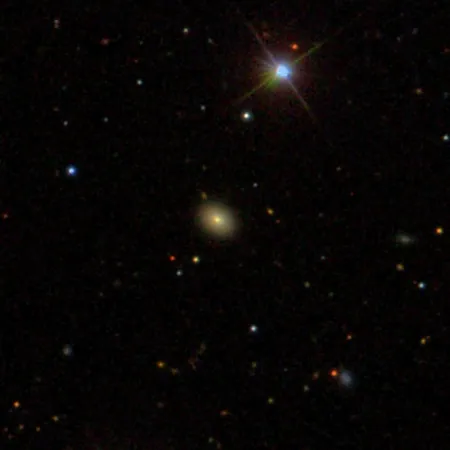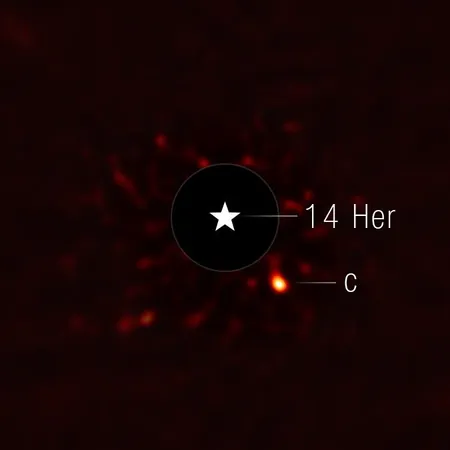
Astronomers Unlock Secrets of Ansky's Powerful X-Ray Eruptions
2025-05-06
Author: Charlotte
A Breakthrough in Astronomy: Discovering Ansky's Quasi-Periodic Eruptions
For the first time ever, astronomers have delved into the enigmatic world of repeating X-ray outbursts near supermassive black holes, thanks to groundbreaking data from NASA's NICER (Neutron star Interior Composition Explorer) and other space missions.
Introducing Ansky: the eighth known source of Quasi-Periodic Eruptions (QPEs), and the one making waves with the most intense and energetic bursts observed to date. Ansky's eruptions strike roughly every 4.5 days and last about 1.5 days, pushing the boundaries of what we know about these extraordinary cosmic phenomena.
Joheen Chakraborty, a graduate student at MIT, shared, "These QPEs are deeply intriguing. Their quasi-periodic nature poses questions that we are still working to answer. Ansky's unique features are helping us refine our understanding of these eruptions."
Ansky Unveiled: The Mystery Behind Its Name and Eruptions
The name Ansky originates from ZTF19acnskyy, a visible-light outburst spotted in 2019, located about 300 million light-years away in the Virgo constellation. This outburst was a red flag, hinting that something extraordinary was taking place.
In a recently published paper, Chakraborty leads a study featured in The Astrophysical Journal, detailing Ansky's characteristics and potential explanations for its eruptions.
Understanding QPEs: Theories and Explorations of Cosmic Forces
The leading hypothesis suggests that QPEs happen when a relatively low-mass object collides with the gas disk surrounding a supermassive black hole, which can be hundreds of thousands to billions of times more massive than our sun. As this smaller object passes through the disk, it expels hot gas clouds — the X-ray outbursts we observe as QPEs.
These eruptions' periodicity may be influenced by the object's spiraling orbit toward the black hole, coupled with the gravitational distortions of space-time that prevent orbits from repeating neatly.
Unprecedented Observations: NICER's Key Role in Discovering Ansky's Eruptions
According to Lorena Hernández-García, an astrophysicist from Chile, Ansky’s extreme eruptions might be attributed to the unique characteristics of its surrounding gas disk. Unlike other QPE systems that usually see a passing star torn apart, Ansky appears to harbor a more expansive disk that can accommodate objects from further afield, resulting in longer eruption intervals.
The NICER telescope operated aboard the International Space Station provided crucial insights, observing Ansky up to 16 times daily from May to July 2024, unveiling crucial X-ray fluctuations indicative of its QPEs.
The Future of Astronomy: Multimessenger Studies and Gravitational Waves
With ongoing research into QPEs, Chakraborty emphasized the importance of these observations in prepping the scientific community for the upcoming era of multimessenger astronomy. This innovative approach combines light, particles, and gravitational waves to enhance our understanding of cosmic events.
NASA is gearing up for the future with ESA's LISA (Laser Interferometer Space Antenna) mission, focused on studying systems like Ansky, expected to launch in the mid-2030s. The insights gained from Ansky will refine models for these extreme systems, paving the way for groundbreaking discoveries.
"The exploration of Ansky is just beginning, and we're eager to continue our observations. The universe is full of mysteries, and there’s so much left to uncover," Chakraborty concluded.









 Brasil (PT)
Brasil (PT)
 Canada (EN)
Canada (EN)
 Chile (ES)
Chile (ES)
 Česko (CS)
Česko (CS)
 대한민국 (KO)
대한민국 (KO)
 España (ES)
España (ES)
 France (FR)
France (FR)
 Hong Kong (EN)
Hong Kong (EN)
 Italia (IT)
Italia (IT)
 日本 (JA)
日本 (JA)
 Magyarország (HU)
Magyarország (HU)
 Norge (NO)
Norge (NO)
 Polska (PL)
Polska (PL)
 Schweiz (DE)
Schweiz (DE)
 Singapore (EN)
Singapore (EN)
 Sverige (SV)
Sverige (SV)
 Suomi (FI)
Suomi (FI)
 Türkiye (TR)
Türkiye (TR)
 الإمارات العربية المتحدة (AR)
الإمارات العربية المتحدة (AR)